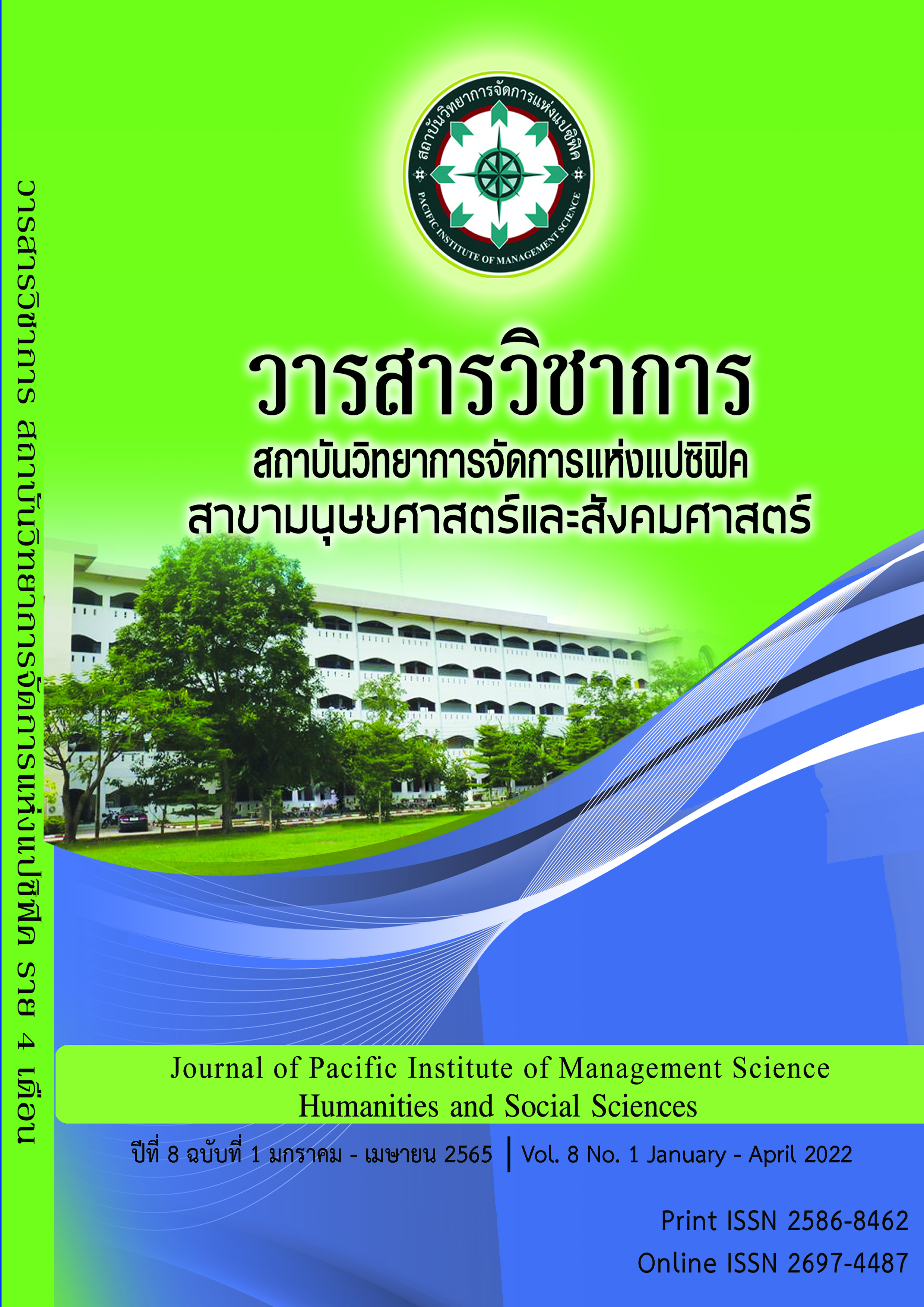Stream of the Three Characteristics : Digital Art Creation and Meaning Analysis Based on Semiotics
Keywords:
Three Characteristics, Digital Art, Meaning Analysis, SemioticsAbstract
This research had three objectives: (1) to study the style and methods of presenting digital art works in abstract natural style based on the three characteristics in Buddhism (2) to create digital art works in abstract natural style (3) to analyze the meanings of digital art works in abstract natural style based on semiotics. The researcher presented digital art creations in the abstract natural style and analyzed the meanings based on semiotics.
The results showed that: A total of 7 collections of creations can be classified as follows: (1) Flower of variation (2) Stream of impermanence (3) Mountain of variation (4) Season of variation (5) Path of three characteristics (6) Stream of three characteristics (7) Light in the dark. Abstract nature paintings were presented in a variety of style and dimensions, comprising different parts of atmosphere in the nature such as streams, valleys, grasses, fields etc. The development of the work can be summarized in 3 aspects: 1) Style 2) Visual dimensions 3) Color tone. The analysis of meaning can be classified into 2 aspects: 1) Direct meaning; It is an interpretation based on the apparent meaning of the symbol such as bushes on the mountain, colorful valleys, light in the twilight etc. 2) Connotation meaning; It is a meaning that is related to the emotions, feelings, values and cultures of the recipient such as withering grass flowers in the twilight atmosphere mean the changes in life when experiencing the truth of birth, old age, sickness and death.
References
คัมภิรดา สุขขวัญ. (2559). ธรรมชาติผันแปรสู่นามธรรม. ศิลปนิพนธ์ปริญญาศิลปบัณฑิต, สาขาวิชา ทัศนศิลป์ (จิตรกรรม), คณะจิตรกรรม ประติมากรรม และภาพพิมพ์, มหาวิทยาลัยศิลปากร.
นัดดา ธนทาน. (2556). การวิเคราะห์ศึกษาภาพเขียนมนุษย์ของ ทวีศักดิ์ ศรีทองดี ระหว่างปี พ.ศ. 2540-2554. วิทยานิพนธ์ปริญญาศิลปศาสตรมหาบัณฑิต, สาขาวิชาทฤษฎีศิลป์, บัณฑิตวิทยาลัย มหาวิทยาลัยศิลปากร.
นฤมล แสนบุ่งค้อ. (2559). สุนทรียภาพแห่งการเปลี่ยนแปลงในปรากฏการณ์ธรรมชาติ. วิทยานิพนธ์ ปริญญาศิลปศาสตรบัณฑิต, สาขาวิชาทัศนศิลป์ (จิตรกรรม), คณะจิตรกรรม ประติมากรรมและ ภาพพิมพ์, มหาวิทยาลัยศิลปากร.
พระอธิการบรรยง ปิยธโร (2560). ศึกษาคุณค่าของการรู้แจ้งในไตรลักษณ์ตามหลักพระพุทธศาสนาเถรวาท. วิทยานิพนธ์ปริญญาพุทธศาสตรมหาบัณฑิต, สาขาวิชาพระพุทธศาสนา, บัณฑิตวิทยาลัย มหาวิทยาลัยมหาจุฬาลงกรณราชวิทยาลัย.
ภัณฑิลา สังคหะ. (2561). การใช้หลักไตรลักษณ์ในการปรับตัวทางสังคมของผู้สูงอายุในเขตเทศบาลนครหาดใหญ่ อำเภอหาดใหญ่ จังหวัดสงขลา. วิทยานิพนธ์ปริญญา พุทธศาสตรมหาบัณฑิต, สาขาวิชาการพัฒนาสังคม, บัณฑิตวิทยาลัย, มหาวิทยาลัยมหาจุฬาลงกรณราชวิทยาลัย.
สุพร แก้วดา. (2554). ห้วงแห่งการก่อเกิดและการเสื่อมสลาย. วิทยานิพนธ์ปริญญาศิลปมหาบัณฑิต, สาขาวิชาทัศนศิลป์, บัณฑิตวิทยาลัย, มหาวิทยาลัยศิลปากร.
Hungelmann J., et al. (1987). Development of the JAREL Spiritual Well-Being Scale. Philadelphia: J.B. Lippincott.
Downloads
Published
Issue
Section
License
Copyright (c) 2022 Pacific Institute of Management Science

This work is licensed under a Creative Commons Attribution-NonCommercial-NoDerivatives 4.0 International License.
บทความที่ได้รับการตีพิมพ์เป็นลิขสิทธิ์ของ สถาบันวิทยาการจัดการแห่งแปซิฟิค
ข้อความที่ปรากฏในบทความแต่ละเรื่องในวารสารวิชาการเล่มนี้เป็นความคิดเห็นส่วนตัวของผู้เขียนแต่ละท่านไม่เกี่ยวข้องกับสถาบันวิทยาการจัดการแห่งแปซิฟิค และคณาจารย์ท่านอื่นๆในสถาบันฯ แต่อย่างใด ความรับผิดชอบองค์ประกอบทั้งหมดของบทความแต่ละเรื่องเป็นของผู้เขียนแต่ละท่าน หากมีความผิดพลาดใดๆ ผู้เขียนแต่ละท่านจะรับผิดชอบบทความของตนเองแต่ผู้เดียว







